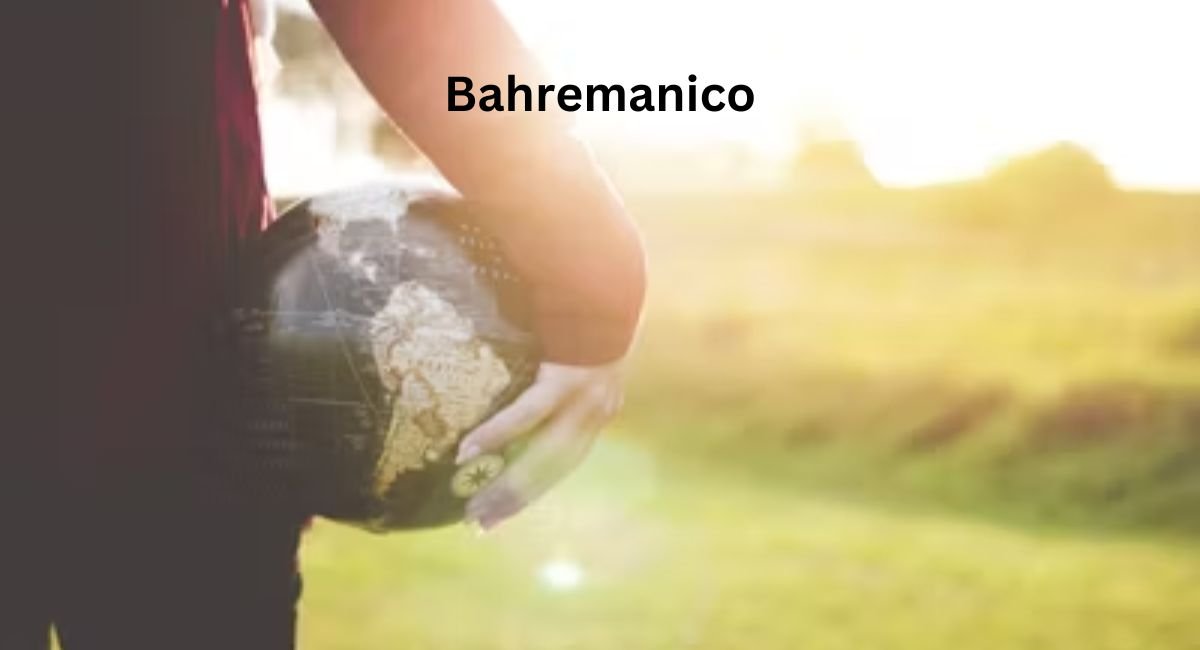In an age where cultures and ideas intermingle more fluidly than ever before, the rise of global cultural movements has become a defining characteristic of modern society. Among these phenomena, the term “Bahremanico“ has recently gained traction. Others see “Bahremanico” as a cultural phenomenon that represents a profound fusion of ideas, styles, and traditions, blending local and global influences into a unique movement that defies conventional boundaries. But what exactly is Bahremanico, and why has it emerged as a potent symbol of cultural unity and evolution?
To understand Bahremanico, we must first explore the intricate layers that make up its essence. More than just a trend, Bahremanico embodies the essence of cultural hybridity, a space where once distinct traditions converge to create something entirely new. This phenomenon reflects the interconnectedness of today’s world, where digital connectivity, migration, and cross-cultural exchanges have enabled the blending of customs, aesthetics, and worldviews. From art and fashion to music and even philosophy, Bahremanico taps into an ever-growing collective consciousness.
Table of Contents
ToggleThe Origins of Bahremanico: A Blend of Cultural Tapestries
The origins of Bahremanico are elusive and can be traced back to the gradual shifts in cultural identity spurred by globalization. Many believe it began as a grass-roots movement, inspired by the increasing accessibility of different cultures through the internet, travel, and social media. As individuals sought to break away from rigid cultural constructs, they began blending elements from different heritages to create an eclectic mix. Some liken Bahremanico to earlier movements like the Renaissance or the Harlem Renaissance, but with a distinctly modern twist — one shaped by technology and cross-border dialogue.
Rather than adhering to any single cultural tradition, Bahremanico celebrates the diversity of human expression. It draws from various sources, including indigenous traditions, contemporary art movements, street culture, classical elements, and even spiritual practices. Whether through visual art, fashion, music, or literature, Bahremanico weaves together different threads to create a singular tapestry. In doing so, it rejects the idea that cultural purity is inherently valuable and embraces the fluidity of identity in the modern world.
Bahremanico in Fashion: A Melting Pot of Styles
One of the most visible manifestations of Bahremanico is its influence on global fashion. Designers across the world have adopted this movement, embracing the blend of styles that it champions. In Bahremanico fashion, you’ll see traditional African prints juxtaposed with minimalist Scandinavian cuts, or ancient Japanese textile techniques mingling with futuristic digital designs. This isn’t mere appropriation — it is a collaboration between cultures, a reimagining of what fashion can be when it is unbound by geography or history.
More than just aesthetics, the Bahremanico movement in fashion promotes sustainability and ethical practices. Designers are increasingly sourcing materials from small, local producers and emphasizing craftsmanship that honors the traditions of different communities. This slow-fashion approach contrasts with the fast-fashion industry’s trend-driven model, representing a desire for deeper cultural engagement and respect.
The Bahremanico Sound: Music as a Bridge
Music has always been a unifying force, but Bahremanico takes this idea to new levels. The blending of musical genres within Bahremanico reflects the seamless integration of various cultures into a cohesive whole. Artists within this movement are not bound by the labels of genre; they create unique soundscapes that include African rhythms, Latin beats, classical string arrangements, and electronic dance music. The result is music that defies categorization but speaks to the heart of multiculturalism.
One example of this is the rise of artists who merge traditional folk music with modern pop elements. Musicians from around the world are sampling ancient chants, tribal drums, and classical instruments, and layering them with contemporary beats and production techniques. This results in a fresh, hybrid sound that is neither completely traditional nor wholly modern — it’s something new and exciting.
Bahremanico Art: Blending Visual Traditions
Art has always been a medium through which cultures communicate, and Bahremanico thrives on this notion. Visual artists working within the Bahremanico movement combine various styles and traditions to create works that are at once familiar and foreign. The movement draws from surrealism, abstraction, realism, and even indigenous art forms, creating pieces that challenge the viewer to see beyond cultural limitations.
For example, Bahremanico art might combine ancient tribal motifs with digital illustrations, or it might reinterpret European classical paintings with influences from modern graffiti culture. This creates a rich visual language that reflects the global nature of our world today. Artists within Bahremanico often use their work to explore themes of identity, migration, and the global diaspora, making it as much about storytelling as it is about aesthetics.
Bahremanico Philosophy: Embracing Cultural Fluidity
The Bahremanico phenomenon is not just about art, fashion, and music — it represents a deeper philosophical shift in how we think about culture and identity. At its core, Bahremanico rejects the idea that identity must be fixed or static. Instead, it celebrates the fluidity of identity, encouraging individuals to draw from multiple traditions and to see themselves as part of a larger, interconnected world.
This philosophy is particularly relevant in today’s society, where issues of migration, displacement, and multiculturalism are at the forefront of global conversations. Bahremanico offers a way to navigate these complex issues by encouraging openness, inclusivity, and curiosity. Rather than fearing the loss of tradition, Bahremanico encourages us to see how traditions can evolve and blend with others to create something new and vital.
Bahremanico and Social Media: A Digital Movement
The rise of Bahremanico as a cultural movement is deeply tied to the role of social media in shaping global consciousness. Social media platforms like Instagram, TikTok, and Pinterest have allowed people from different parts of the world to share and engage with each other’s cultures in ways that were previously impossible. These platforms have become digital stages where Bahremanico plays out, as creators blend visual aesthetics, music, fashion, and ideas into content that reflects the fusion of diverse traditions.
Social media influencers and content creators have embraced Bahremanico, showcasing how they mix cultural influences in their work, from outfits to food to interior design. The virality of Bahremanico-inspired content speaks to its widespread appeal, particularly among younger generations who are more open to cross-cultural collaboration. This movement has taken on a life of its own, as people around the world share their own interpretations of what Bahremanico means to them.
Challenges and Criticisms of Bahremanico
Despite its celebratory nature, Bahremanico is not without its critics. Some argue that the blending of cultures can lead to the dilution or commercialization of sacred traditions. There are concerns that aspects of Bahremanico may be exploited for profit rather than appreciated for their cultural significance. For example, indigenous symbols or practices might be appropriated without proper respect or understanding.
This criticism highlights the importance of mindfulness within the Bahremanico movement. Creators and consumers alike must strive to ensure that their participation in Bahremanico is respectful and informed. This means giving credit where it is due, honoring the origins of different cultural elements, and fostering dialogue rather than simply consuming culture.
FAQs
What is Bahremanico?
Bahremanico is a cultural phenomenon that blends different ideas, styles, and traditions from around the world, creating a hybrid movement that spans fashion, art, music, and philosophy.
How did Bahremanico originate?
Bahremanico emerged from the global exchange of ideas facilitated by the internet, travel, and migration. It represents the fluidity of culture in a connected world, where traditions merge and evolve.
Why is Bahremanico important?
Bahremanico is important because it challenges the idea of fixed cultural identities and celebrates the blending of traditions, offering a more inclusive and dynamic way of understanding culture.
How does Bahremanico influence fashion?
Bahremanico influences fashion by encouraging designers to mix and match different cultural elements, creating eclectic, hybrid styles that reflect global diversity. It also promotes sustainability and ethical practices.
What role does social media play in Bahremanico?
Social media has been instrumental in spreading Bahremanico, allowing people to share and engage with cultural influences from around the world, making the movement more accessible and widespread.
What are the criticisms of Bahremanico?
Some criticisms of Bahremanico include concerns about cultural appropriation and commercialization. There are worries that sacred traditions may be exploited or used without proper respect and understanding.
Conclusion
The Bahremanico cultural phenomenon reflects the complexities of our interconnected world. It represents a celebration of diversity and the blending of traditions in a way that feels organic and modern. Through fashion, music, art, and philosophy, Bahremanico invites us to embrace cultural fluidity and explore the potential of hybrid identities. However, with this openness comes responsibility — to approach cultural fusion with respect, mindfulness, and an understanding of the traditions we are borrowing from. Ultimately, Bahremanico is about building bridges between cultures and creating something new and beautiful from the rich diversity that exists across the globe.



